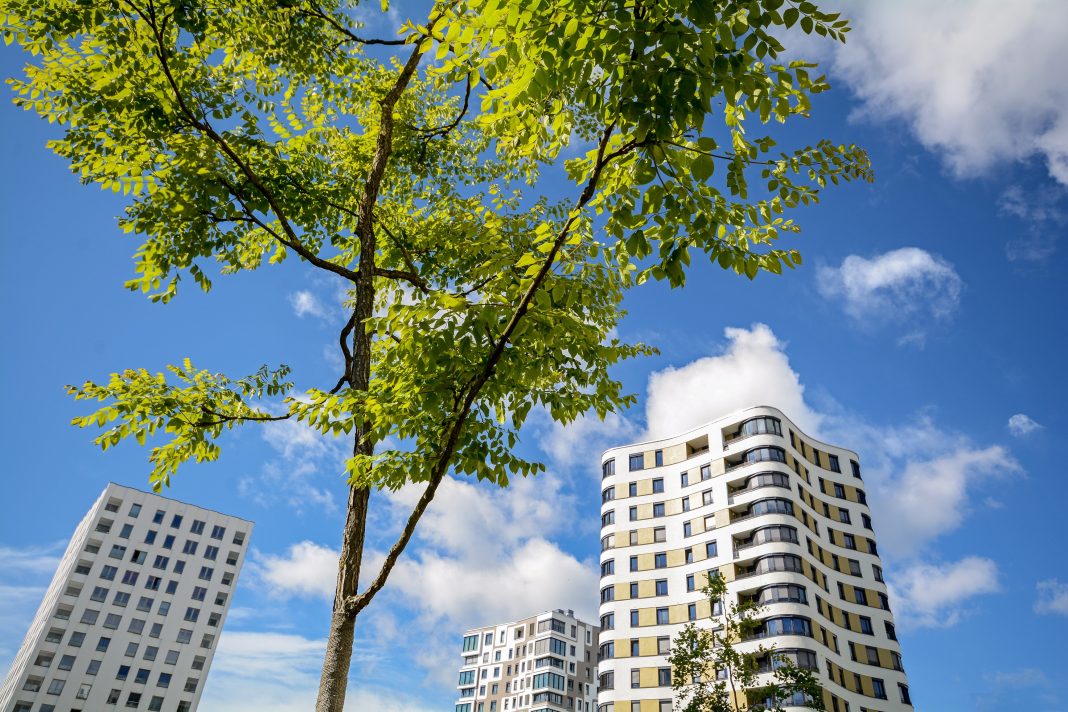Ramboll has launched its Sustainable Buildings Market Study (SBMS), revealing insights from architects, developers, contractors and investors across the UK and Scandinavia on sustainable development
In Europe, 90% of our daily lives are spent indoors. We live, learn and work in buildings, and the environments within and around our buildings have a strong influence on our productivity, health and overall well-being.
Buildings are responsible for more than 40% of global energy usage, and as much as one-third of greenhouse gas emissions.
Uncertainty remains on the value of sustainable buildings
Whilst the findings of the SBMS show that sustainable buildings are becoming more mainstream, it also confirms a lack of clarity on the costs and benefits of sustainable buildings. When asked if sustainable buildings are a good investment, close to 50% of all respondents have little or no insight if sustainable buildings cost more to build, if they have reduced operational cost or if they trade at a premium. It is clear there is a lack of hard evidence to show whether sustainable buildings yield a positive return on investment. Addressing this knowledge gap will be vital for accelerating the uptake of sustainable buildings.
Bringing market and domain insight, Ramboll’s study helps to bridge the knowledge gap and provides actionable insights for investors, contractors and users of sustainable buildings.
Future generations will expect sustainability as the norm
While return on investment is a key driver, Rikke Bjerregaard Orry, Ramboll’s global sustainability director for buildings, said: “We anticipate an increasing interest from future generations in leading sustainable lifestyles, minimising their personal carbon footprint and working for companies that share their values and operate sustainably. Sustainable buildings tap into this trend and will increasingly become an identity marker for companies striving to make a difference”.
Phil Kelly, Ramboll’s head of sustainability and building physics in the UK, added: “Let’s also not forget who we are designing these buildings for. The occupants and tenants of the buildings we’re starting to design today, are going to be trying to attract the workforce of tomorrow who are just starting their GCSEs.
”Considering the school’s climate change protest earlier this year, we need to understand the demands of this workforce, who are going to have very high expectations of the buildings they live, learn and work within.”
Life cycle thinking rated the most important trend in sustainability
The SBMS reveals the latest trends for the sector, with ’Life Cycle Thinking’ being the most important trend (71%), followed by Health & Wellbeing (58%) and Carbon Neutrality (53%). Commenting on these trends, Phil Kelly said: “The uptake of lifecycle assessment is lagging far behind other sustainable building design methodologies, digitalisation is going to be critical in bringing information earlier in the design process where it can have the greatest impact to sustainability.”
Further trends in the report highlighted digitalisation, innovative technologies and new construction techniques that carry the promise of improving sustainability and efficiency across the entire value chain. According to respondents, wider use of Building Information Modelling (BIM) – not only in the design phase, but also in the operational phase and at the end-of-life-stage of a building can be expected. Creating a digital twin of a building makes it possible to consolidate different sustainability metrics, such as Life Cycle Assessment and Total Cost of Ownership into a single model, creating transparency and making it possible for the developer to base their decisions on more complete environmental and economical understanding.
Is certification a driver for sustainability?
Ramboll’s study highlighted that ‘Client, tenant or other stakeholder requirement’ (60%), ‘Enhancement of building performance’ (51%) and ‘Improved quality’ (44%) were the most important criteria in their decision to use environmental certification schemes, yet 60% sited certification being ’too expensive/time-consuming’ as the key reason for not undertaking environmental certification.
Commenting, Paul Bosworth, a Ramboll sustainability compliance consultant, said: “The study highlights respondents believe sustainability certificates bring a measure of quality and added value benefits.
”Not surprisingly, new, issue-specific schemes such as Fitwel are on the rise. We’ve also been working with some of the largest investment managers in the world recently to carry out operational sustainability certification using BREEAM In-Use. Ultimately, value for money and flexibility are both key to the popularity of any certification scheme.”














